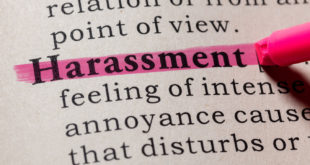This section will more closely examine the social and cultural conditions that intensify or perpetuate rape. The causes and reasons for rape are deeply entrenched in our social structure. Up to this point, we have explored some of the motivations and circumstances which lead men to rape. We have learned that men rape out of anger and a need to overpower, dominate, and humiliate. We have also looked at some of the historical attitudes from which today’s beliefs and stereotypes have evolved. However, we must look beyond both rapists’ motivations and history if we are to truly understand the act of rape.
Why does rape exist? What causes rape? What is it about our society that makes rape one of the fastest growing violent crimes in this country? Rape prevention techniques are very important in decreasing the vulnerability of individuals, but in order to eliminate-the occurrence of rape from our society, we must first examine its causes more deeply so that we can take collective action. We must understand the sociology of rape in order to effectively work towards the elimination of it.
Despite the necessity for rape prevention, it is, to some degree, like applying a “band-aid” on the problem. The underlying reasons and causes for rape must be defined, examined and resolved or rape will not cease. Rape Prevention must focus on eliminating the conditions in society which make women easy targets for rape. Victim control or rapist control alone are not effective. Victim control teaches women to avoid rape, but doesn’t reduce the threat of rape.
Furthermore, rape cannot always be avoided, no matter what precautions the woman takes. It also puts part of the responsibility and blame for rape on the victim. Rapist control confuses prosecutions with prevention. There is little evidence that punishment serves as a deterrent.
Besides, very few rapist are ever incarcerated. From very early ages, men and women are conditioned to accept different roles. Women are raised to be passive and men are raised to be aggressive. We are conditioned to accept certain attitudes, values and behaviors. Our conditioning is continuously and relentlessly encouraged and reinforced by the popular media, cultural attitudes and the educational system. The media is a major contributor to gender-based attitudes and values. The media provides women with acomplete list of behaviors that precipitate rape. Social training about what is proper and ladylike, as well as what is powerful and macho, teaches women to be victims and men to be aggressors.
The high incidence of rape in this country is a result of the power imbalance between men and women. Women are expected to assume a subordinate relationship to men. Consequently, rape can be seen as a logical extension of the typical interactions between women and men. One way to analyze the power relationship between men and women is by examining some of the common social rules women are taught.
RULE #1: When spoken to, a woman must acknowledge the other person with a gracious smile. Smiling and acknowledging almost any approach has become reflexive. for a potential rapist, this can serve as a “pretest” to determine how compliant a woman will be. Because women do not usually consider the option of ignoring an unwanted approach, they are more vulnerable.
There are many reasons why women feel compelled to acknowledge someone they do not want to: peer group pressure; not wanting to hurt someone’s feelings; women’s lack of experience in acting on their own intuition about danger. The key to changing this comes in evaluating each approach as it comes and using your own feelings and needs as the main criteria for responding.
RULE #2: Women must answer questions asked of them. In our culture, one of the rudest things a person can do is not answer a direct question. In social situations preceding rape, the man often puts the burden of rejection on the woman by asking questions such as, “What’s wrong with you, don’t you like me?” or, “What’s wrong with you, don’t you like men?” a woman often compensates for hurting the man’s feelings by complying with his demands. It is important to consider each question you are asked against your own wishes at the moment.
RULE #3: Women must not bother other people or make a scene because they are uncomfortable. Generally speaking, it is not ladylike to bother anyone at any time. Women are not expected to intrude at any time, but rather, to be ready to help others at all times. When women scream for help, no one is willing to get involved. we have learned that yelling “FIRE” is much more effective than yelling “RAPE” or “HELP”. Women are reluctant to draw attention to themselves, especially if in a place, such as a party, bar, or dance. The solution is to solicit the help of others if a direct statement of “stop” is not heeded.
RULE #4: When in trouble, it is best to defer to the protection and judgment of men. There are two flaws with this rule:
l) it is men who endanger or bother women
2) there are not always trustworthy men around to protect women. Women must take the problem of victimization into their own hands; support and protect each other by being together, watching out for each other and understanding what it is like to be at the mercy of men.
RULE #5: Causal touching or suggestive comments in social settings are meant as a tribute to a woman’s desirability. Many women believe that being ogled by a group of construction workers is nothing more than a form of praise. Many sexual assaults, however, begin with a “harmless” compliment or inquiry from a rapist. His comments are a way of testing how accommodating the woman might be. The lack of clarity about what constitutes insulting behavior and the learned ambivalence women have about unwanted approaches makes them vulnerable to sexual assault.
RULE #6: It is the natural state of affairs for men to carry the financial burden of social situations. This rule is losing some of its strength as more women are now paying their own way. This is still a popular rationale for men to justify demanding sex. The autonomy and self respect that come with not always allowing an escort to pay is important in reacting to potentially dangerous situations.
RULE #7: When engaged in a social encounter, it is not proper for a woman to superior in any game, sport or discussion, if she wants to be accepted. It has been held that beating a man at games, be it pool, tennis, scrabble, or monopoly will hurt a man’s pride and decrease his interest. It follows that if women are never allowed to win at anything with a man, it is expecting a great deal to ask a woman to effectively cope with a man who is trying to rape her. The danger in this is having a mind set that trivializes our own resources and talents in deference to a man’s. This ridiculous unwritten rule of expected passivity needs to be recognized and eradicated in order for women to know they are capable of defending themselves.
RULE #8: Women should always accept and trust the kindness of strangers if they offer help. Women tend to trust people who approach them or offer help. Unfortunately, the ploy of, ”I’m helping you for your own good, you obviously need it,” is used by potential rapists who have planned the crime in advance. The problem for women is that there is no way of knowing whether an overture of assistance is genuine or not. therefore, it is best to limit the times where you might be in genuine need of help. Women must learn to scrutinize such “shoulds” more closely. Each individual woman must reexamine society’s expectations of her. Once women have evaluated these rules of social behavior, they can create their own guidelines instead of adhering to, however unconsciously, these socially prescribed rules.
The next step involves examining each situation as it arises. Understanding a potentially dangerous situation before one finds oneself in the midst of it will make it much easier to act in a definitive, effective way. The time to reevaluate the need to accept help from strangers is not after the fact: not after he has pushed you into your front door after having helped you with your packages. The time to reevaluate is before the situation occurs. In order to accomplish this, it is important for women to respect themselves, and know they are worthwhile. Women have basic rights. When a woman really values herself, she is less likely to find herself in a situation where she can be used or misused. This is not to say that women who find themselves in dangerous situations are at fault or do not value themselves, but rather that women can reduce their vulnerability by cultivating assertive behavior and by thinking about potentially dangerous situations in advance.
Women’s vulnerability to rape is a result of their subordinate relationship to men. The set of beliefs and attitudes that divide people into classes by sex and justify one sex’s superiority is called sexism. There are a number of sexist dictates that serve to maintain this subordinate relationship:
- Women’s status in society: Women occupy a relatively powerless position in society and are the recipients of fewer advantages and privileges. Men’s benefits are built into a patriarchal system.
- Rape as a means of control over women: Rape plays a role in maintaining patriarchy by perpetrating the threat of violence. The acts of just a few violent men can terrorize all women and can control women’s lives. The indifference of other men reinforces this effect.
- Women’s dependence on men: Many women receive most of their benefits through men rather than through their own ability. This dependence is reinforced by the cultural belief that dependence is a “womanly” trait. Women are dependent on men for political representation, economic support, social position and psychological approval.
A strategy for eliminating women’s vulnerability to rape involves altering the power relationship between women and men. Women’s vulnerability will not end with individual change alone; there will have to be social change as well. The whole assumption of male superiority will have to be negated. Rape must be viewed as a political issue, because it keeps women powerless and reinforces the status quo of male domination.
The socialization of women must be changed. Society trains females to be physically and emotionally unequipped to respond effectively to danger. Training begins at an early age. Boys and girls are channeled into different physical activities, because of the believed differences in physical and muscular development and stamina. Consequently, as adults, females are unable to gauge both their own bodies’ resistance to injury, and their own strength and power. Learning selfdefense in schools and on the job would be a step towards alleviating women’s vulnerability, as would providing girls and women with equal opportunities and encouragement to engage in sports. The emotional training women receive also contributes to their inability to successfully fight back. Women learn to be passive, gentle, nurturing, accepting and complient. Rapists select victims they can intimidate and overpower. Most women are reluctant to challenge men’s offensive behavior because of their emotional training and conditioning (i.e., it is not proper to ”make a scene.”)
In addition, women tend to have an aversion to violence. It must be recognized that non violence is no longer a virtue if it serves to maintain victimization. There is a difference between becoming a violent person and responding to violence in an appropriate and assertive manner. Women are not being encouraged to become violent individuals or to sanction violence, but rather to learn the skills to combat violent assaults against their persons.Unfortunately, many women see themselves as powerless victims. Women can cultivate a confident and competent image. They need to learn direct and appropriate responses which reflect a seriousness about their refusal to be intimidated. Confrontation training helps women learn how to respond to men’s suggestive and rude comments effectively. Women are also kept vulnerable through their isolation from each other. Women are socialized to compete with each other for the attention of men and to mistrust each other.
Collective strategies to eliminate rape must be utilized. Competition and mistrust are not conducive to collective strategizing among women. Women must learn to see other women as sources of aid and to work together to decrease the vulnerability of all women. It is important that women not blame themselves for the conditioning that has resulted in isolation.
Frequently, women psychologically distance themselves from the issue of rape and from each other by adopting the attitude that, “It can’t happen to me,” or that, “Only immoral women are raped.” Community isolation also exists. Women within a community do not use and sometimes do not even see each other as resources. There are many factors which enforce the belief that “a woman’s place is in the home.” Consequently, women tend to be displaced from the mainstream of community action and decision making.
In order to deal with the problem of isolation, it is important to recognize and use the power of numbers. Women might develop ad-hoc committees, confrontation groups and support groups. More effective defenses can be planned by sharing common experiences and reactions to rape. Consciousness raising groups can work to identify and overcome sexist and racist attitudes.
Through analysis of common problems, women can come to trust each other and recognize the effectiveness of their collective strength. Women can work in their neighborhoods to command public attention to their safety needs.
A few awareness strategies that can be employed in neighborhoods are:
- Organizing meetings and educational programs
- Block organizing (small groups to meet to discuss safety and planning to organize neighborhood)
- Neighborhood lobbying (i.e. letter writing)
- Whistle alert (Whistle sounded for help)
- Shelter houses (women in neighborhood make their homes available for temporary refuge)
- Watch programs (patrol programs, with assistance of experienced community organizers)
- Lobbying for preventive education to be included in the public school curriculum
- Take Back The Night March (symbolically supporting women’s right to walk at night.
In essence, attention must be drawn to the focus of rape. Rape must be viewed as a political issue, not just another crime or mental health problem. It must be seen as an issue which affects all women. However, rape is not just a women’s problem–it is a community problem.
Sumber: http://pubweb.ucdavis.edu/Documents/RPEP/rculture.htm
 Aliansi Laki-laki Baru Gerakan Laki-laki untuk Keadilan Gender
Aliansi Laki-laki Baru Gerakan Laki-laki untuk Keadilan Gender





